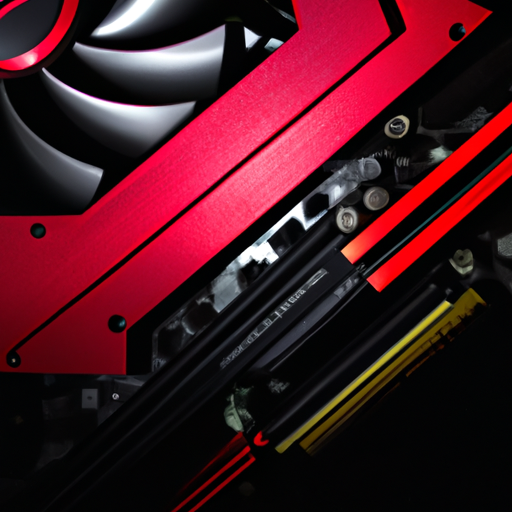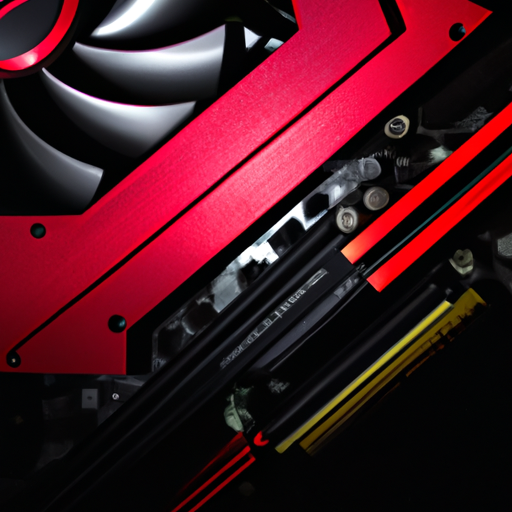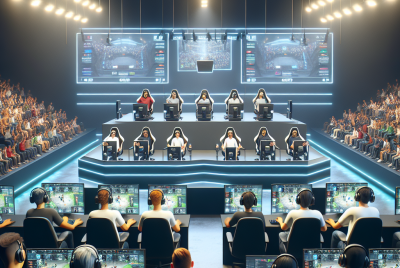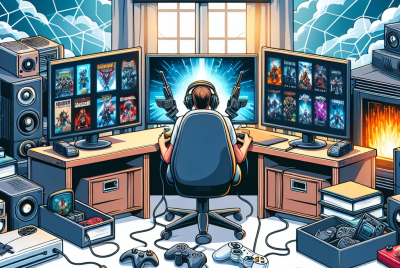What Is The Role Of A Graphics Card In Gaming? 10 Strong Informative Facts
What Is The Role Of A Graphics Card In Gaming: Introduction
Have you ever asked the question, “What is the role of a graphics card in gaming?” A graphics card plays a vital role and this article aims to shed light on this essential component of your gaming experience. From rendering breathtaking landscapes to ensuring smooth gameplay, the graphics card is the unsung hero behind the immersive visuals you encounter. Join us as we unveil the mysteries of this pivotal piece of hardware and discover why it holds the key to unlocking your gaming potential.
Graphics Card Basics
What is a graphics card?
A graphics card, also known as a GPU (Graphics Processing Unit), is a hardware component that is specifically designed to handle and render graphics and images on a computer screen. It is responsible for processing and generating visual data, allowing users to view and interact with digital content, including games, videos, and images.
Why is a graphics card important in gaming?
A graphics card plays a crucial role in gaming as it significantly impacts the quality and performance of the gaming experience. It is responsible for rendering and displaying the intricate details, vibrant colors, and lifelike textures that make games visually appealing and immersive. A powerful graphics card can handle complex calculations and deliver fast and smooth frame rates, resulting in a seamless and enjoyable gameplay experience.
Different types of graphics cards
There are various types of graphics cards available in the market, each catering to different needs and budgets. The two main categories are integrated graphics cards and dedicated graphics cards. Integrated graphics cards are built into the computer’s motherboard and share system memory, providing basic graphics capabilities. Dedicated graphics cards, on the other hand, are separate units that come with their own dedicated memory and processing power. They are designed explicitly for graphics-intensive tasks such as gaming and are more powerful than integrated graphics cards.
Components of a graphics card
A graphics card comprises several essential components that work together to render and display graphics. The main components include the GPU, video memory (VRAM), cooling system, and connectivity ports. The GPU is the heart of the graphics card, responsible for processing and rendering graphics. VRAM serves as a high-speed memory dedicated to storing the graphical data being rendered. The cooling system, which typically includes fans and heat sinks, helps dissipate the heat generated by the GPU. Connectivity ports, such as HDMI, DisplayPort, and DVI, allow the graphics card to connect to external displays.
Rendering Graphics in Games
What is rendering?
Rendering refers to the process of generating and creating images or frames from 3D models or scenes. In gaming, rendering involves transforming the digital data of the game into a visual representation that can be displayed on a screen. This includes the calculation of lighting, shadows, textures, and other visual effects that contribute to the overall realism and visual appeal of the game.
How does a graphics card help in rendering?
A graphics card plays a vital role in rendering by offloading the complex calculations required to create realistic graphics from the CPU (Central Processing Unit) to the GPU. The GPU’s parallel processing architecture allows it to handle multiple calculations simultaneously, making it well-suited for the highly parallel nature of rendering. By utilizing its dedicated cores and specialized algorithms, the graphics card can quickly and efficiently process the vast amount of data required for rendering, resulting in smoother and more detailed visuals.
Types of rendering technologies
There are various rendering technologies utilized by graphics cards to enhance the visual quality of games. Some of the common rendering techniques include rasterization, ray tracing, and hybrid rendering. Rasterization is the traditional method used in most games, where polygons and textures are rendered based on their position and visibility. Ray tracing, on the other hand, is a more advanced technique that simulates the behavior of light rays in real-time, resulting in highly realistic lighting, shadows, and reflections. Hybrid rendering combines the strengths of both rasterization and ray tracing to achieve a balance between performance and visual quality.
Importance of GPU in rendering
The GPU, being the primary component of a graphics card, plays a critical role in rendering. Its parallel processing capabilities allow it to handle the complex calculations required for rendering much faster and more efficiently than the CPU. The GPU’s dedicated cores and advanced algorithms enable it to handle tasks such as lighting calculations, texture mapping, and geometry processing, which are essential for creating realistic and immersive game visuals. As a result, a powerful GPU can significantly enhance the rendering capabilities of a graphics card and deliver visually stunning gaming experiences.
Frame Rates and Refresh Rates
What are frame rates?
Frame rate refers to the number of individual images or frames that are displayed per second in a game or video. It is measured in frames per second (fps). The frame rate directly affects the smoothness and fluidity of the gameplay. Higher frame rates lead to smoother animations, more responsive controls, and an overall more immersive gaming experience.
How does a graphics card impact frame rates?
The graphics card has a significant impact on the frame rates that a game can achieve. A more powerful graphics card can generate and render frames at a faster rate, resulting in higher frame rates. This is particularly important in graphically demanding games that require a lot of calculations and visual effects. A powerful graphics card can handle these tasks efficiently, resulting in smoother gameplay and a higher frame rate. On the other hand, a lower-end or outdated graphics card may struggle to keep up with the demands of modern games, leading to lower frame rates and a less optimal gaming experience.
What are refresh rates?
Refresh rate refers to the number of times per second that a display refreshes or updates the image being shown. It is measured in hertz (Hz). A higher refresh rate leads to a smoother and more visually appealing display. While frame rate measures the number of frames rendered by the graphics card, refresh rate measures how quickly those frames are displayed on the screen.
The relationship between graphics card and refresh rates
The graphics card and the refresh rate of the display are closely tied together. The graphics card is responsible for generating the frames, while the display refreshes those frames. To take full advantage of a high refresh rate display, a powerful graphics card is needed to render and supply a sufficient number of frames to keep up with the refresh rate. If the graphics card cannot produce enough frames, the display may show duplicate frames, resulting in a less smooth and visually appealing experience. Therefore, a well-matched graphics card and display with a high refresh rate can provide a more immersive and enjoyable gaming experience.
Resolution and Image Quality
Definition of resolution and image quality
Resolution refers to the number of pixels displayed on a screen, typically measured as the width x height of the screen in pixels. Higher resolutions result in sharper and more detailed images. Image quality, on the other hand, refers to the overall visual fidelity and clarity of an image, which is influenced by factors such as resolution, color accuracy, and level of detail.
How does a graphics card affect resolution and image quality?
A graphics card has a significant impact on both resolution and image quality in games. A more powerful graphics card can handle higher resolutions, allowing for larger and more detailed displays. It can render the intricate textures, complex lighting effects, and realistic shadows that contribute to high image quality. Additionally, a powerful graphics card can support higher-quality texture filtering and anti-aliasing techniques, which further enhance image quality by reducing jagged edges and improving overall smoothness. By investing in a powerful graphics card, gamers can enjoy games at higher resolutions and with improved image quality.
Impact of graphics card on anti-aliasing and texture filtering
Anti-aliasing and texture filtering are techniques used to enhance the visual quality of games by reducing jagged edges and improving the sharpness of textures. These techniques can have a significant impact on image quality, particularly in games with high-resolution displays. A powerful graphics card with advanced anti-aliasing and texture filtering capabilities can apply these techniques more effectively and efficiently, resulting in smoother edges, more detailed textures, and an overall higher level of image quality.
Ray tracing and graphics card
Ray tracing is an advanced rendering technique that simulates the behavior of light rays in real-time, resulting in highly realistic lighting, reflections, and shadows. Ray tracing requires extensive computational power, and a powerful graphics card is necessary to handle the complex calculations involved. The latest graphics cards feature dedicated ray tracing hardware, such as ray-tracing cores or RT cores, which are specifically designed to accelerate ray tracing and improve its performance. These dedicated hardware components allow for real-time ray tracing in games, significantly enhancing the visual quality and realism of game graphics.
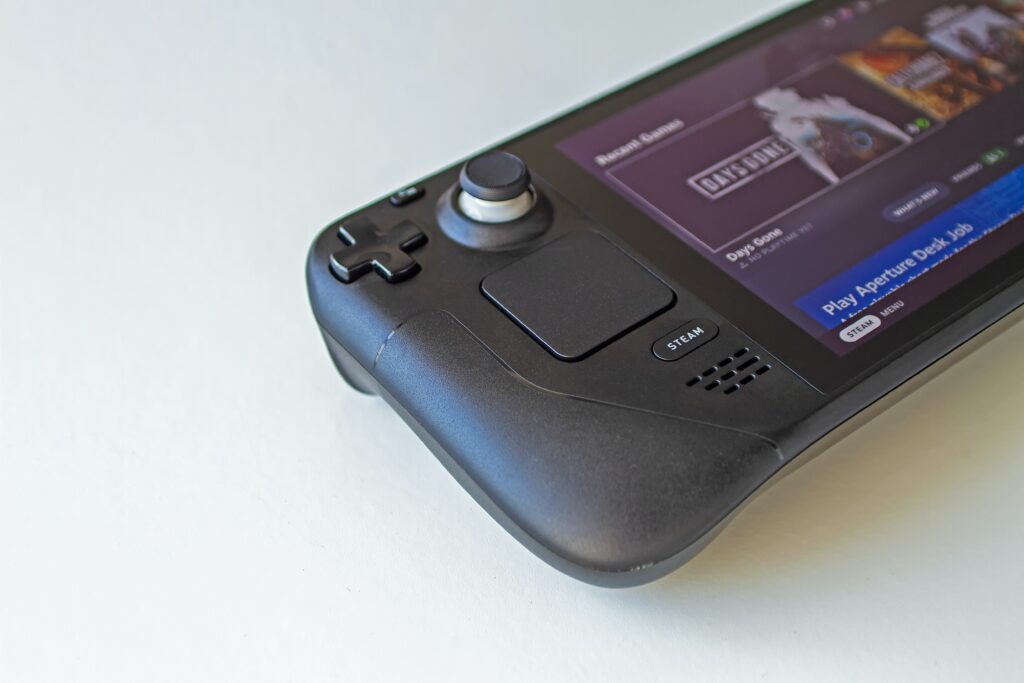
Compatibility and Performance
Graphics card compatibility with gaming systems
When choosing a graphics card, compatibility with the gaming system is crucial. The graphics card must be compatible with the motherboard, power supply, and other hardware components of the system. Factors such as the physical dimensions of the graphics card, power requirements, and available slots on the motherboard should be considered to ensure a seamless installation.
How to choose a graphics card based on performance needs
When selecting a graphics card, it is essential to consider your performance needs and the types of games you play. Higher-end graphics cards with more powerful GPUs are suitable for graphically demanding games and can handle higher resolutions, frame rates, and visual effects. On the other hand, lower-end graphics cards may be sufficient for less demanding games or users with budget constraints. It is important to strike a balance between the graphics card’s performance and the requirements of the games you intend to play.
Factors affecting graphics card performance
Several factors can affect the performance of a graphics card. The GPU’s core clock speed, the number of cores, and the amount of memory (VRAM) directly impact its performance. Additionally, the cooling system’s efficiency and the overall thermal design of the graphics card also affect performance, as higher temperatures can lead to throttling and reduced performance. The driver software plays a crucial role in optimizing graphics card performance, and keeping the graphics card drivers up to date is important.
Overclocking and its impact on graphics card performance
Overclocking is the process of increasing the clock speeds of a graphics card’s GPU and memory beyond their default settings to achieve higher performance. Overclocking can result in increased frame rates and smoother gameplay. However, it also increases power consumption, generates more heat, and may reduce the lifespan of the graphics card if not done correctly. Overclocking should be done with caution and within recommended limits to ensure the stability and longevity of the graphics card.
Virtual Reality and Graphics Cards
Introduction to virtual reality (VR)
Virtual reality (VR) is an immersive technology that places users in a simulated environment, creating a sense of presence and interaction. VR gaming involves wearing a headset that tracks the user’s head and hand movements, allowing them to explore and interact with virtual worlds. The realistic and immersive nature of VR places high demands on the graphics card to render and display the detailed and complex virtual environments in real-time.
Importance of graphics card in VR gaming
The graphics card is crucial for a smooth and immersive VR gaming experience. VR requires the graphics card to render two separate images simultaneously, one for each eye, at a high frame rate to prevent motion sickness and maintain realism. The graphics card must also render the complex 3D environments, textures, and lighting effects required for a convincing VR experience. A powerful graphics card is essential to meet the demanding performance requirements of VR gaming and ensure smooth gameplay without lag or latency.
VR-ready graphics cards
Due to the specific demands of VR gaming, some graphics cards are designated as “VR-ready” or “Virtual Reality Ready.” These graphics cards are specifically tested and certified to meet the performance requirements of VR gaming. They typically have higher-end GPUs, more VRAM, and specialized software optimizations to ensure a seamless and enjoyable VR experience. Choosing a VR-ready graphics card is recommended for those who plan to immerse themselves in the world of virtual reality gaming.
Performance requirements for VR gaming
VR gaming has higher performance requirements compared to traditional gaming. A high frame rate of at least 90 frames per second is necessary to maintain smooth visuals and prevent motion sickness. The graphics card must also support low latency and high response times to ensure a seamless and immersive experience. Higher resolutions, such as 4K or even 8K, may be required for VR applications to provide a sharper image quality. Therefore, a powerful graphics card capable of meeting these performance requirements is essential for a satisfactory VR gaming experience.

Power Consumption and Cooling
Power consumption of graphics cards
Graphics cards can consume a significant amount of power, especially high-end models that feature powerful GPUs. The power consumption of a graphics card is influenced by factors such as its core clock speed, the number of cores, and the complexity of the graphics being rendered. As graphics cards become more powerful, their power requirements increase, leading to higher electricity consumption.
How to manage power consumption in gaming systems
To effectively manage power consumption in gaming systems, several strategies can be employed. Choosing a graphics card that balances performance and power efficiency is essential. Power-saving features offered by some graphics cards, such as dynamic voltage and frequency scaling, can help optimize power consumption based on workload. Additionally, using efficient power supply units (PSUs) with high efficiency ratings can minimize power wastage. Monitoring and adjusting in-game graphics settings, such as reducing anti-aliasing or lowering texture quality, can also help reduce power consumption.
Graphics card cooling mechanisms
Graphics cards generate a significant amount of heat during operation, making efficient cooling mechanisms vital to maintain optimal performance and prevent overheating. Most graphics cards feature fans or heat sinks to dissipate heat and keep temperatures within acceptable limits. Advanced cooling solutions, such as liquid cooling or active cooling with multiple fans, can provide even better thermal management. Some graphics cards also come with software that allows users to adjust fan speeds or set temperature targets for more precise control over cooling.
The effect of overheating on graphics card performance
Overheating can have detrimental effects on graphics card performance, stability, and lifespan. When a graphics card reaches high temperatures, it may start to throttle, reducing clock speeds and performance to protect itself from damage. This can result in lower frame rates, stuttering, and a less enjoyable gaming experience. Prolonged exposure to high temperatures can also shorten the lifespan of the graphics card and increase the risk of component failure. Proper cooling, regular cleaning of dust from the cooling system, and ensuring adequate airflow within the gaming system are essential to prevent overheating and maintain optimal graphics card performance.
Optimizing Graphics Settings
What are graphics settings?
Graphics settings in games allow users to adjust various visual options to optimize performance and image quality according to their hardware capabilities and preferences. These settings typically include options for resolution, texture quality, anti-aliasing, shadow quality, and other graphical effects. Fine-tuning these settings can help strike a balance between performance and visual quality based on the capabilities of the graphics card and the user’s preferences.
Different graphics settings in games
Games offer a wide range of graphics settings that can be adjusted to optimize performance and image quality. Some of the common settings include:
- Resolution: This setting determines the number of pixels displayed on the screen. Lower resolutions result in better performance, while higher resolutions offer sharper visuals.
- Texture quality: This setting controls the level of detail and clarity of textures in the game. Lower texture quality can improve performance, while higher quality provides more detailed and realistic textures.
- Anti-aliasing: Anti-aliasing smooths out jagged edges and reduces the appearance of aliasing artifacts. Different levels of anti-aliasing, such as FXAA, MSAA, or SMAA, tradeoff between performance and image quality.
- Shadow quality: This setting determines the detail and realism of shadows in the game. Lower shadow quality can enhance performance, while higher quality provides more accurate and realistic shadows.
- Effects and post-processing: These settings control other graphical effects such as depth of field, motion blur, ambient occlusion, and reflections. Adjusting these settings can have varying impacts on performance and visual quality.
Adjusting graphics settings for optimal performance
To achieve optimal performance in games, it is important to adjust graphics settings based on the capabilities of the graphics card and personal preferences. Lowering settings such as resolution, texture quality, and anti-aliasing can significantly improve performance at the cost of some visual fidelity. It is recommended to experiment with different settings and strike a balance between performance and image quality that suits your gaming needs. Monitoring frame rates while adjusting settings can provide valuable insights into the impact on performance.
Balancing performance and visual quality
Balancing performance and visual quality is a subjective decision that depends on individual preferences and the requirements of the game being played. Some gamers prioritize maximizing performance and achieving high frame rates, while others prioritize visual fidelity and are willing to sacrifice some performance for better image quality. It is important to find the right balance that provides an enjoyable gaming experience without sacrificing too much performance or compromising on visual quality. Adjusting graphics settings, monitoring system performance, and experimenting with different presets can help strike this balance.
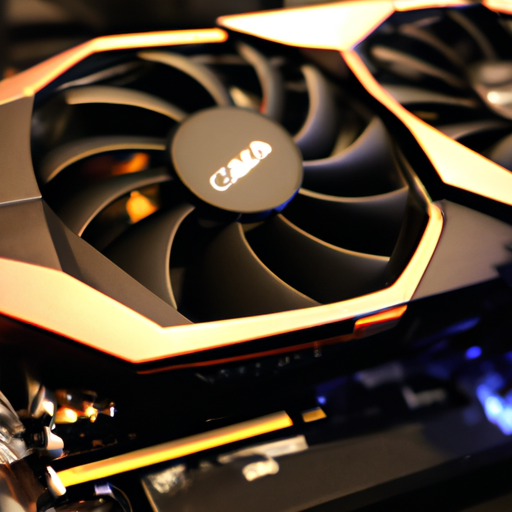
Upgrading and Troubleshooting
When and why should you consider upgrading your graphics card?
There are several scenarios where upgrading your graphics card may be necessary or beneficial. If your current graphics card is unable to handle the latest games at acceptable frame rates or struggles to render high resolutions and detailed visuals, upgrading to a more powerful graphics card can significantly enhance your gaming experience. Upgrading may also be necessary if you plan to switch to a higher-resolution monitor or adopt new technologies, such as virtual reality, that require more advanced graphics capabilities.
Steps to upgrade a graphics card
Upgrading a graphics card involves several steps to ensure a smooth and successful transition. The steps typically include:
- Research: Identify the graphics card that meets your performance needs and is compatible with your system.
- Preparations: Ensure your power supply can handle the power requirements of the new graphics card. Remove the current graphics card drivers and prepare the necessary tools and cables for installation.
- Installation: Physically remove the old graphics card from the motherboard, insert the new graphics card into the appropriate slot, and connect the necessary power cables.
- Driver installation: Download and install the latest drivers for the new graphics card from the manufacturer’s website.
- Testing: Run benchmarks or play games to ensure the new graphics card is performing as expected and there are no compatibility or stability issues.
Common graphics card problems and troubleshooting
Like any other hardware component, graphics cards can encounter issues that affect their performance or functionality. Some common graphics card problems include artifacting (visual glitches or artifacts on the screen), driver crashes, overheating, and compatibility issues. Troubleshooting graphics card problems involves identifying the root cause and taking appropriate measures, such as updating drivers, adjusting graphics settings, cleaning the cooling system, or seeking professional assistance if needed. Online forums and support communities are valuable resources for troubleshooting graphics card problems.
Ensuring compatibility when upgrading graphics card
Ensuring compatibility when upgrading a graphics card is crucial to avoid compatibility issues and ensure a smooth installation. The compatibility considerations include:
- Physical dimensions: Ensure the new graphics card fits within the available space in your computer case.
- Power requirements: Check if your power supply unit can provide sufficient power to the new graphics card.
- Connectivity: Ensure the new graphics card is compatible with the available connectivity ports on your motherboard.
- Software compatibility: Check if the new graphics card is compatible with your operating system and the games or applications you intend to use.
Before purchasing a new graphics card, it is recommended to research and verify its compatibility with your existing hardware to ensure a successful upgrade.
Conclusion
In conclusion, a graphics card plays a crucial role in gaming by enabling the rendering and display of high-quality graphics, optimizing performance, and enhancing the overall gaming experience. It is responsible for generating realistic graphics, handling complex calculations, and providing smooth frame rates.
The choice of a graphics card impacts various aspects of gaming, including resolution, image quality, frame rates, and compatibility with emerging technologies such as virtual reality. By understanding the basics of a graphics card and considering factors such as performance needs, power consumption, cooling mechanisms, and graphics settings optimization, gamers can make informed decisions when choosing, upgrading, and troubleshooting their graphics cards.
As technology continues to advance, graphics cards are expected to evolve further, offering even more realistic visuals and pushing the boundaries of gaming experiences. Keeping graphics card drivers up to date is crucial to ensure optimal performance and compatibility with the latest games and software.
